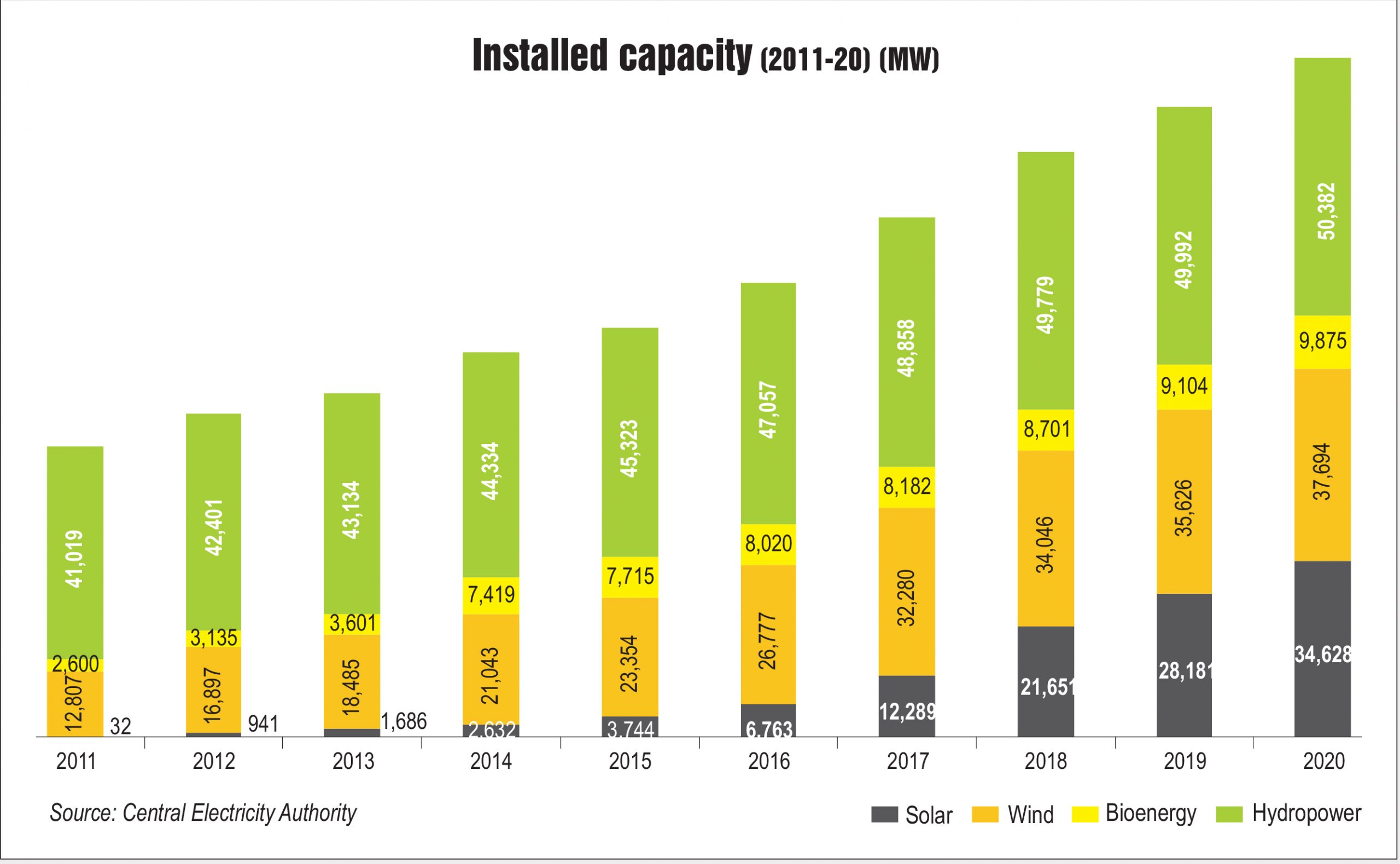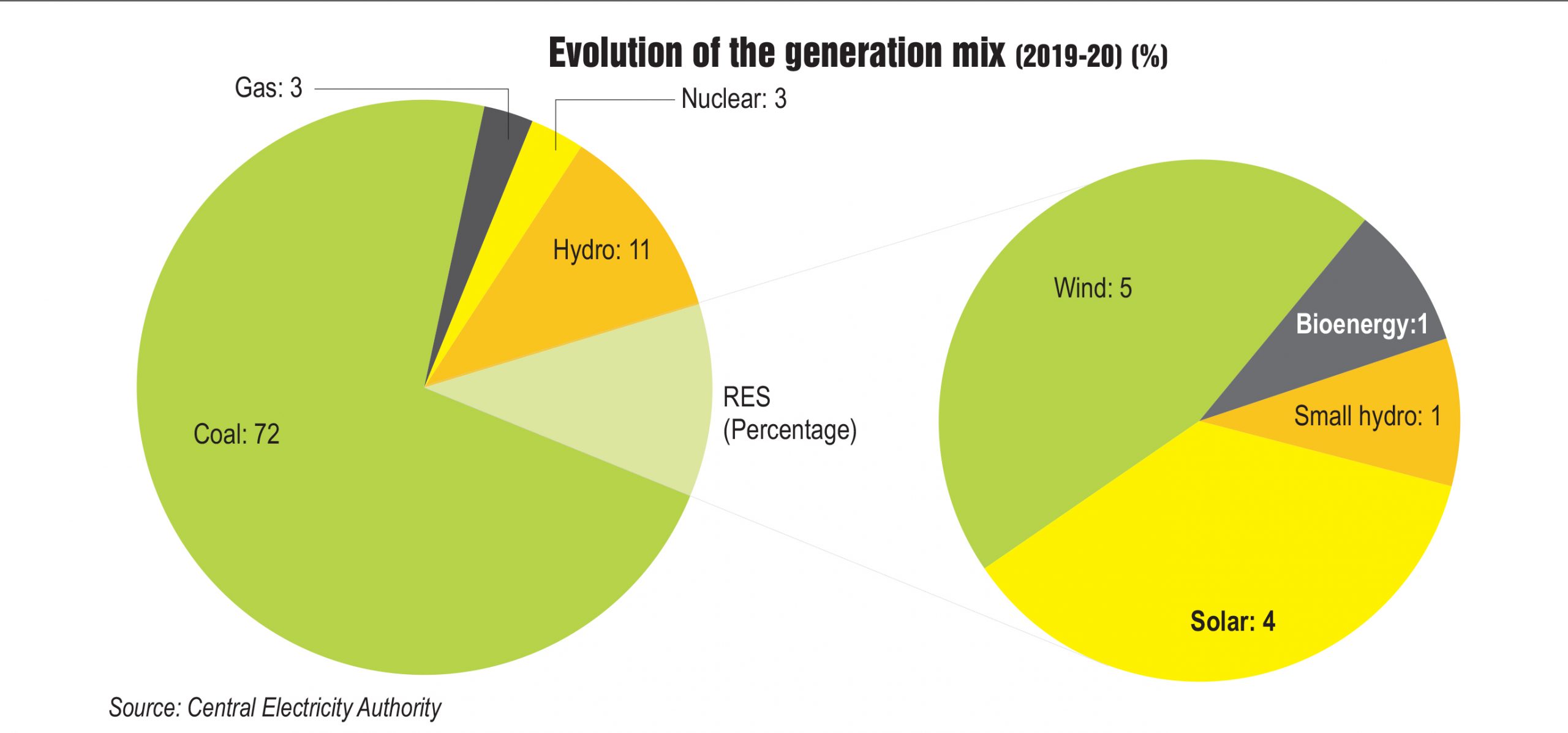Growth in installed capacity
Renewable energy capacity has expanded significantly over the past decade. Starting out with about 56 GW of installed capacity, India has now crossed 135 GW. A dominant share of almost 73 per cent of this renewable capacity consisted of hydropower in 2011; however, it has since declined to stand at 38 per cent in 2020. Over the past 10 years, there has been solid capacity addition in the wind and solar segments, especially solar. Wind and solar power together form more than half of the renewable power capacity in India.
While overall renewable energy has grown at a CAGR of 10 per cent over the period 2011-20, solar has grown at a CAGR of about 117 per cent. The surge in solar power came on the back of the National Solar Mission, which was launched in 2010 and targets the installation of 100 GW of grid-connected solar power plants by 2022. Today, India is one of the world leaders in solar power. It recently displaced Italy to occupy the fifth position in solar power deployment globally, with over 35 GW of capacity.
India’s Intended Nationally Determined Contributions target is to achieve about 40 per cent cumulative installed electric power capacity from non-fossil fuel-based resources by 2030. Currently, India’s installed renewable capacity (including large hydropower) makes up about 36 per cent of the total installed capacity. With the addition of nuclear power, the share of non-fossil fuel-based energy capacity goes up to 38 per cent, which is quite close to the 40 per cent target.

 Renewable power generation trend
Renewable power generation trend
The power generation mix has seen the share of renewables rising over the past decade. Generation from renewable energy sources stood at about 51 TWh in 2011 and 138 TWh in 2019-20, growing at a CAGR of 11.7 per cent. Overall, in terms of share in the generation mix, renewables made up 20 per cent of the total in 2011-12 and 22 per cent in 2019-20. Although this increase is not radical, the contribution of different sources within renewables has seen a significant change. Hydropower’s contribution has reduced over the years. Its 14 per cent share in 2011-12 reduced gradually to 11 per cent in 2019-20. Meanwhile, solar power, which did not have a significant share in 2011-12, increased its share to about 4 per cent of total generation in 2019-20. Wind power also increased its share to contribute 5 per cent to the total mix, while biopower remained at about 1 per cent.




